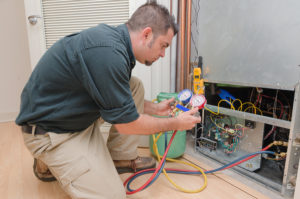How to Overcome Common HVAC Problems with Modern Technology
The continuous increase in the cost of electricity has gotten the attention of every homeowner and HVAC manufacturers are gradually recognizing the need to develop energy-efficient as well as eco-friendly products. There are a number of modern HVAC components available in the market and the top among these in terms of innovation in HVAC technology include:
Ductless Split System
This is a type of HVAC system which is commonly used in residential buildings. The system consists of a heating and cooling component which can cover up to 5 areas when properly installed in your home. Through refrigerant lines, the indoor ductless air handler and the outdoor condensing unit are linked. Ductless split systems resemble ordinary window air conditioners even in the manner in which they are operated. The main difference lies in the partitioning of the outdoor and indoor portions of the system.
A ductless split system is mostly preferred by homeowners because it helps save money and energy. This is because these systems have no ducts through which air leakages normally occurs making them energy efficient.
Oil Free Compressors
In order to lubricate the internal bearings, you are supposed to apply oil to the compressors. Although this seems helpful, it may actually cause your HVAC system to become inefficient when the refrigerant transports the oil to the condenser and evaporator. The oil may then coat the internal parts which in turn will obstruct the transfer of heat. Ultimately, this will make the unit to work extra hard so it can use up all the energy.
For compressors that use oil, frequent maintenance is necessary to ensure the oil is not contaminated. The application of oil, however important it is, doesn’t fully eliminate the risk of friction. Continuous friction causes deterioration of the bearings which eventually leads to a breakdown of the unit and hence replacement.
Oil free compressors do not suffer this problem because the magnetic bearings suspend the rotating shaft and impellers so that together they move as a unit. This is why oil free compressors are efficient and eliminate the need for frequent maintenance. They range in size from 60 to 160 tons and their operating efficiency is between 0.35 and 0.55 kilowatts per ton.
Variable Refrigerant Flow Systems (VRFs)
These are considerably new in the HVAC field. They balance the flow rate on the refrigerant all the way from the compressor to the heating or cooling load.
https://www.youtube.com/watch?v=4I06uXrOs4M
There are basically two types of VRF systems:
- One which circulates the refrigerant between multiple indoor units and a solitary outdoor unit
- The other which is best suited for bigger buildings consists of water source heat pumps one for each of the individual zones, a plate, supplemental boilers, a frame heat exchanger, a piping for the circulation of water for the exchanger and pumps as well as a cooling tower.
During cold times, the heat pumps from the individual zones efficiently transfer heat to the cooling tower through the heat exchanger. This makes the area cooler. To make the area warmer, heat is emitted from the heat pumps in the individual zones by way of a water circulation loop heated by boilers.
If you are not sure which option to go with, consult with your local HVAC professional.


Comments
How to Overcome Common HVAC Problems with Modern Technology — No Comments
HTML tags allowed in your comment: <a href="" title=""> <abbr title=""> <acronym title=""> <b> <blockquote cite=""> <cite> <code> <del datetime=""> <em> <i> <q cite=""> <s> <strike> <strong>